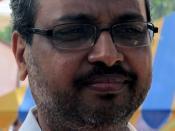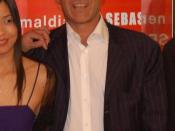Documentary film-making has a history as long as that of fiction film-making and began in the late 1800s. From the first developments of film cameras many people found the need to 'document' the life they saw around them. Film gave rise to a new and very powerful way of looking at the things.
Each decade brought with it lighter and easier to use camera equipment, as well as film stock which could be used in a wider variety of lighting conditions. This made films easier to make, and the subjects of documentary widened.
In the 1950s television and video technology made documentaries even cheaper to make, and they became an important part of television scheduling.
'Documentary' has come to mean a single film or programme (sometimes part of a series) which concentrates on a single subject, and is presented in a factual way. Documentaries tell us something important about our world - and in the best examples, make us think about the world in a new way.
Documentaries cover a huge range of topics including historical events, science, current affairs, the arts, social and political issues, and nature or wildlife.
Authenticity is the key to successful documentary film-making. The information must be presented as 'real', and must convince the audience that what they are seeing is genuine. Documentary film-makers use various techniques to achieve this.
VOICE-OVER
Many documentaries use one or more voice overs. Often during an interview, the film will cutaway to show what the interviewee is talking about whilst the voice carries on as a Voice-over.
Another common type of voice-over is 'the narrator', whose voice continues throughout the whole film telling the audience 'the story'. The narrator often remains invisible, and is omniscient (all knowing ), almost like the voice of God.
THE INTERVIEW
Interviews are central...



Opinion
I find it very interesting.
0 out of 0 people found this comment useful.